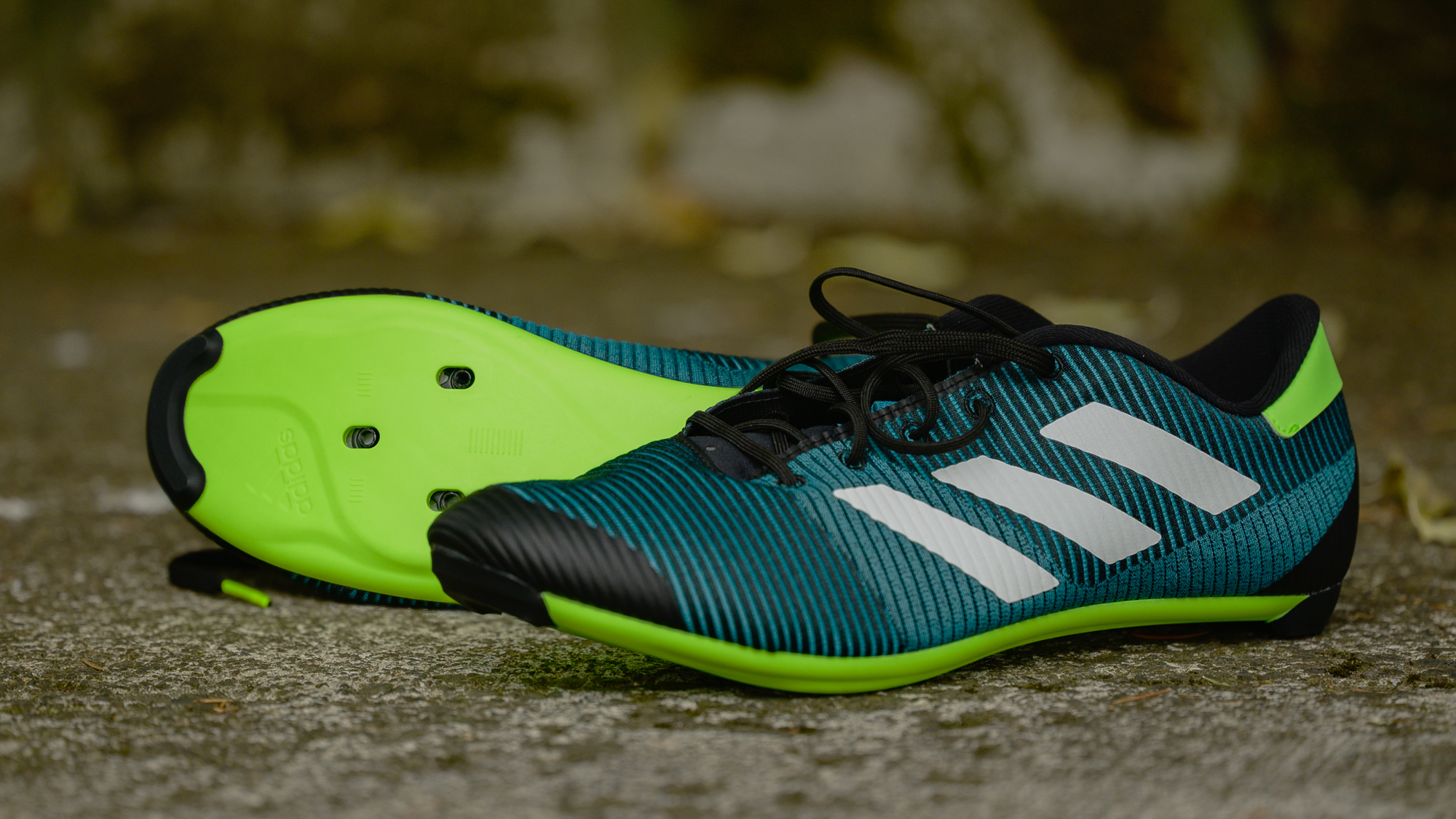
Despite its relatively little-known status in cycling these days, Adidas has a rich history in the sport that reaches all the way back to 1956. The brand donned the feet of legendary cyclist Eddy Merckx through much of his career and was a mainstay for many years in professional cycling. In 2005, the brand released the Adistar Road SL shoes, but then went quiet until 2020.
Price: $180 / €150
Sizes: UK2 to UK14 / EU35 to EU50
Weight: 294g per side, Size 44 ⅔
Colours: US - Core Black / Cloud White / Lucid Lemon, UK - Core Black / Cloud White
After 15-years Adidas released a shoe called The Road Cycling Shoe and buyers went crazy for it. The shoe looked a lot like the 1978 Eddy Merckx Competition, but with a focus on a new kind of buyer. Instead of shooting for the high-end, Adidas was trading on nostalgia and looking to capture fitness riders who valued style and cared about sustainability.
Now in 2023, it's time for a second act. There's a new version of The Road Cycling Shoe that keeps much of what riders liked in the first version, but also updates a few things. Sometimes you'll find this version referred to as the Adidas The Road Cycling Shoe 2.0, but it's also known by the same name as the first generation. Either way, I've spent plenty of time with a pair of the new version, and already added them to the list of the best cycling shoes. If you're looking for more details, keep reading to see if it's worth riding in the iconic three-stripe design.

Design and aesthetics
Using the same name for an updated model always makes research difficult for buyers. The easiest way to check what version of the Adidas The Road Cycling Shoe you are looking at is to check the laces. The second generation routes the laces directly through the fabric upper with five round holes on either side of the tongue. In contrast, the earlier shoe used loops of fabric underneath, with just one round hole on either side near the top.
Although it would seem that the new design helps grab more of the upper for a better fit, it also changes the look of the shoe. In the US you can choose between a white, black, or greenish colourway for the shoe but particularly in black, the resemblance to the 1978 Adidas cycling shoe is striking. The stripes have changed over the years but the shape and even details like the visual effect of the toe cap is very similar. This is a completely modern shoe though.
Instead of any trace of leather, the upper is now a fully synthetic recycled knit. Adidas makes no specific claims of the carbon impact but the jacquard weave starts with a yarn that uses 50% Parley Ocean Plastic and 50% recycled polyester. The Parley Ocean plastic half is upcycled plastic waste that gets intercepted from beaches and coastal communities before reaching the ocean. Adidas is a founding member of the Parley organisation and uses the material throughout the vast portfolio of Adidas sportswear products, The Road Cycling Shoes are just one of them.

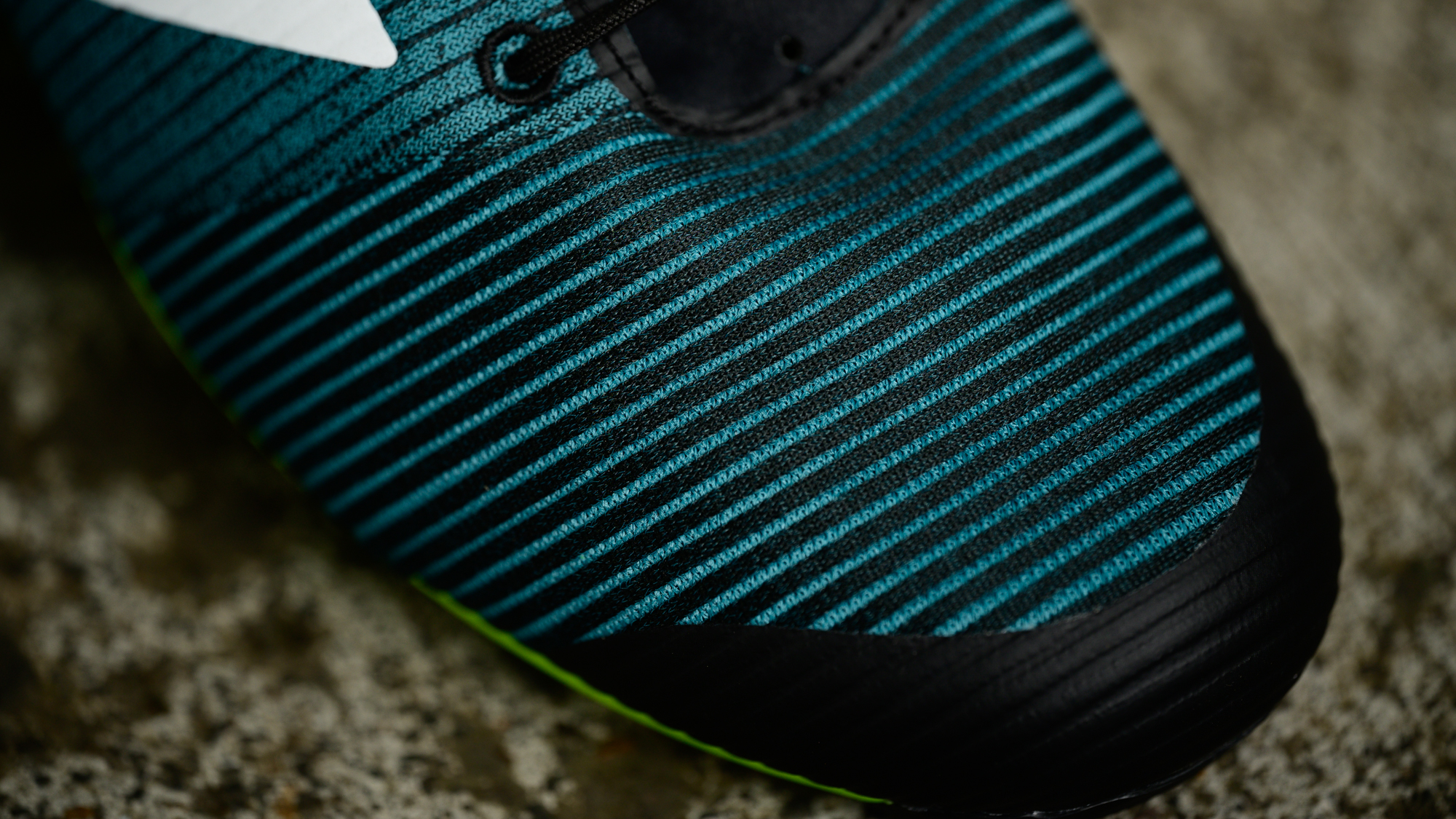

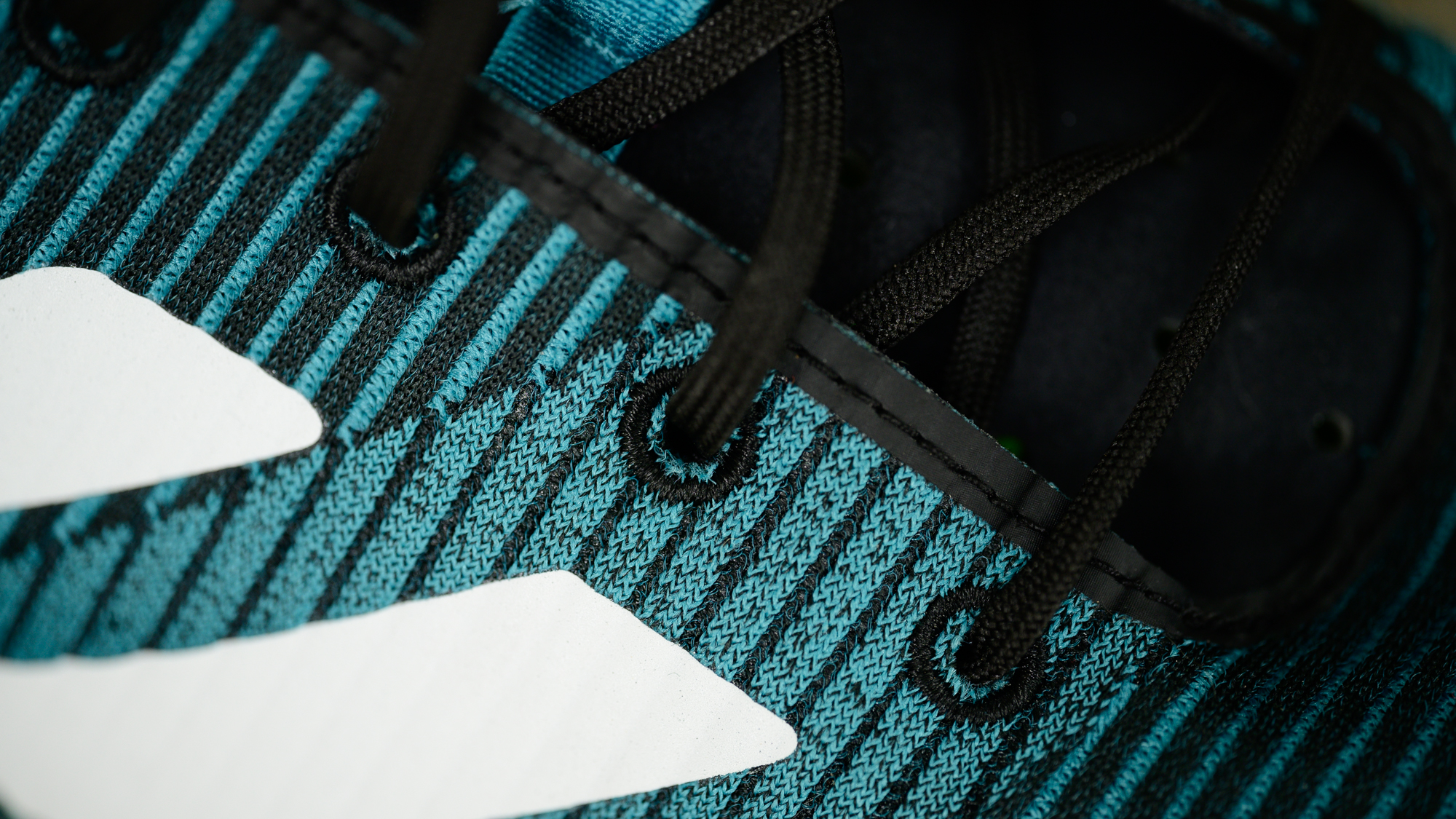
When Adidas is ready to put the trademarked yarn to use, the brand knits it into an alternating pattern of positive and negative sections. The effect is most noticeable in the green as there is more contrast that plays off the black secondary colour. If you prefer less noticeable texture, stick to white or black but you'll also want to consider the knit nature in that decision. Like all knit shoes, these aren't going to be easy to clean.
Adidas does have some protection built into the design though. Both the toe and the heel use a coating that, as mentioned, visually mirrors the 1978 shoes but also protects in the two vulnerable areas so that walking down stairs or accidently hitting your front tyre won't immediately spoil them. You'll also find the same coating used for the three stripes on the side, although in that case it's highly reflective for a bit of extra visibility in low light.
At the base of The Road Cycling Shoes, you won't find carbon fibre. Instead, Adidas specs a fibreglass-reinforced polyamide plate. This does save money but the reasons go beyond that. Like the upper, this is a sustainability play. Carbon is difficult to recycle while Nylon, another name for polyamide, has a path to recyclability. Moulding the front and rear traction pad as part of the base also helps with both price and sustainability.
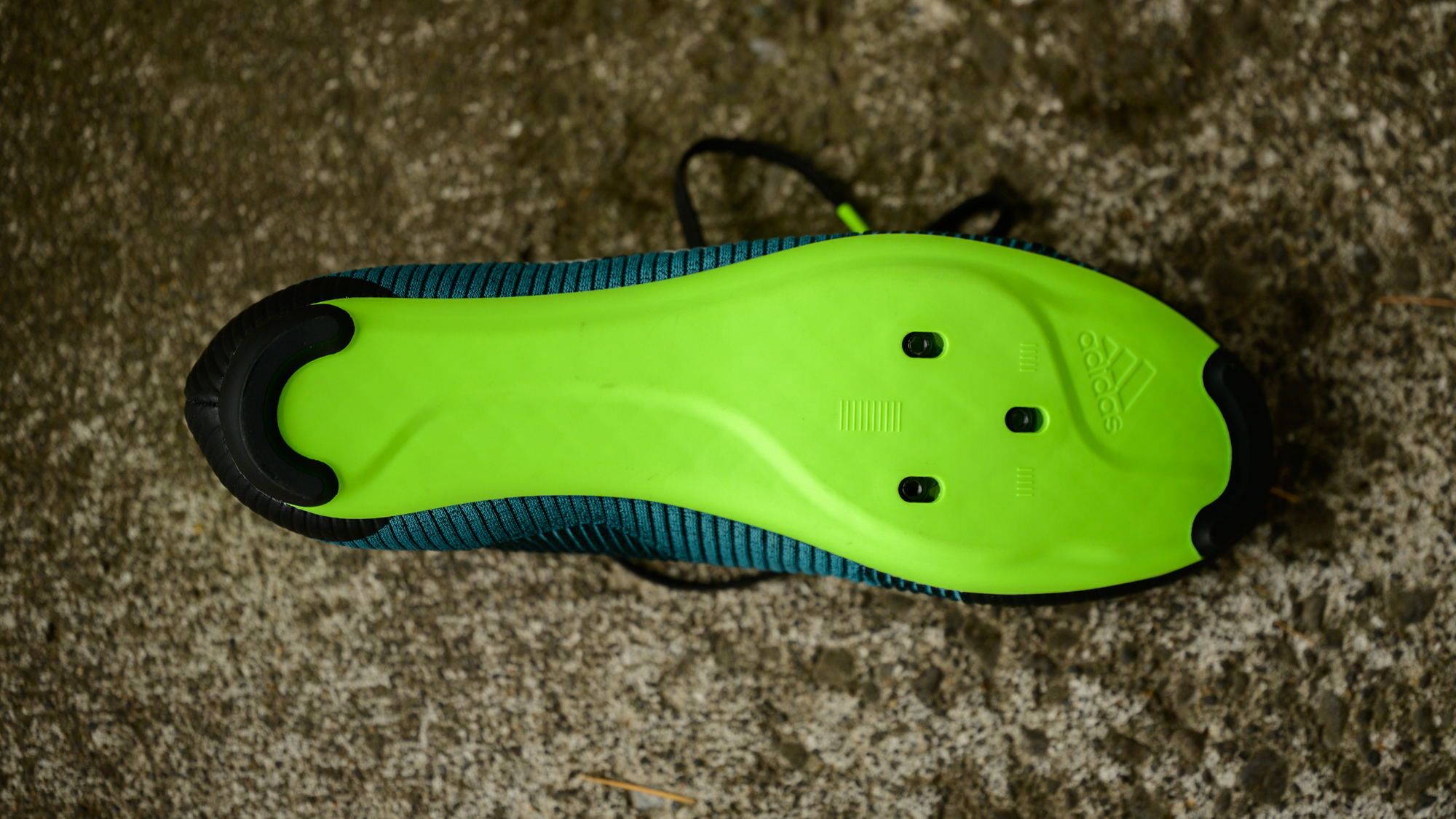
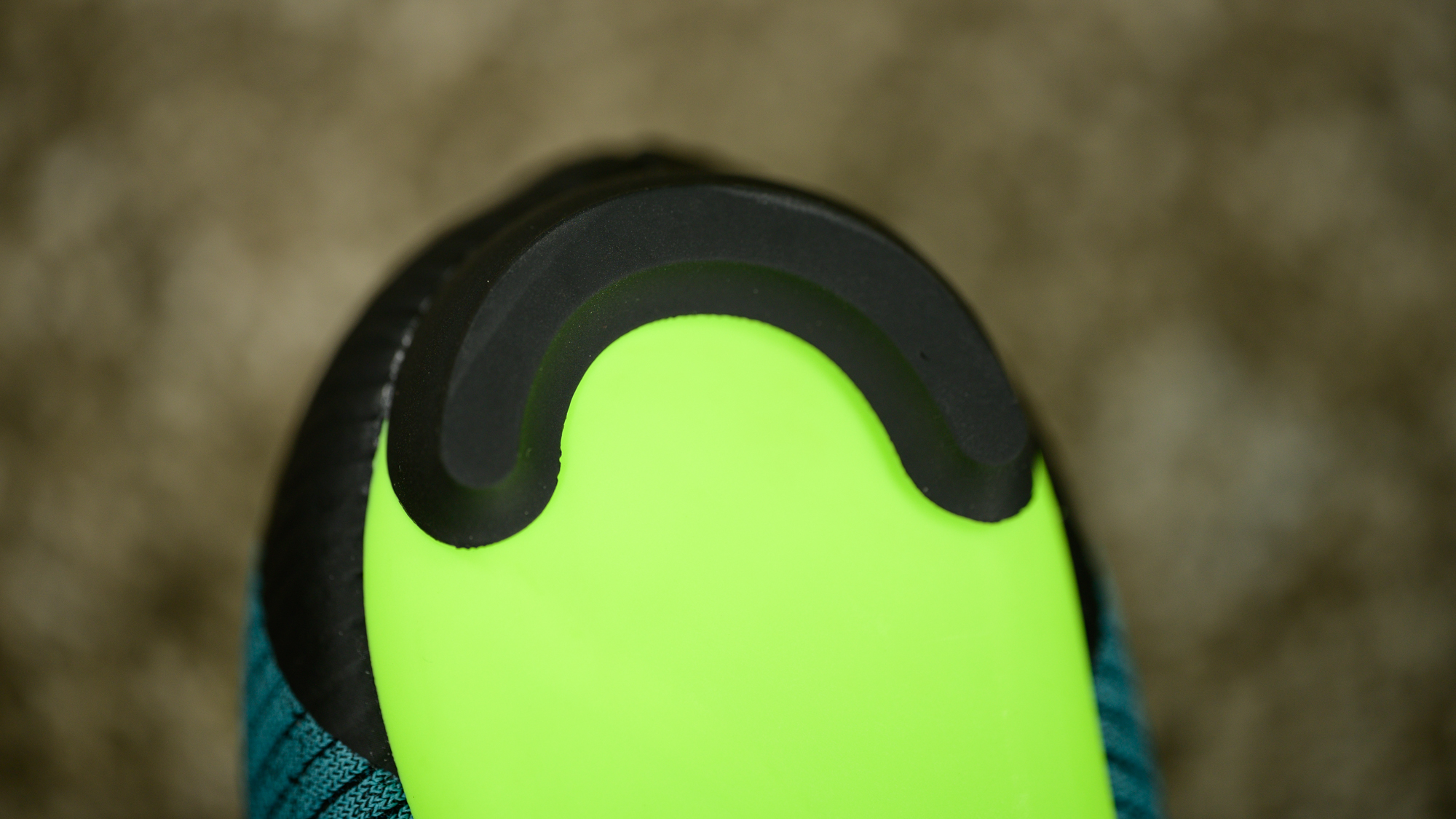

Performance
Adidas might have history but that's long gone. The brand isn't acting like a cycling company with The Road Cycling Shoes. The website in the US and UK use standard shoe sizing, and there's a steep upturn to the toe that meant I had to go up in sizing a bit. When I asked about these seemingly small details, Adidas was quite clear that it played into the overall strategy. These shoes are closer to football boots (soccer cleats) than they are a high-end cycling shoe like the Nimbl Feat Ultimate. The focus is on adjectives like comfort and the accessibility, not descriptions such as best possible power transfer.
Of course, discussing that as a concept is different than really understanding it. Putting on The Road Cycling Shoes for the first time was when I started to understand better. The knit upper is soft on the inside and there's plenty of padding at the ankle as well as under the tongue. The laces aren't the kind of high-tech wonder material you find on the Giro Empire SLX and they feel pretty standard. Without cleats, you can walk around on a carpeted floor and apart from the slippery sole, it almost feels like you are wearing normal shoes. You can even move your toes around like any standard shoe.
These aren't standard shoes though. The three-bolt cleat mount has room to move 5mm forward or back and moulded lines help with getting the angle right. The laces are stiff enough that you can dial in the right pressure throughout the foot and there's a bit of elastic to hold them safely away from the chain. So far, the cycling specific details mesh pretty well with the design pieces that are more like a football boot.


Once you start pedalling, the focus of these shoes comes back to the forefront. The soles that feel so fantastic off the bike are incredibly flexible for a cycling shoe. Certainly high-end carbon fibre shoes are stiffer but The Road Cycling Shoes are flexible even in comparison to another entry-level shoe like the Bontrager Circuit Road Shoe. As someone who regularly rides the stiffest shoes on the market, I find these so flexible that it's somewhat distracting.
Distracting is not the same as uncomfortable though. Riding long distances in flexible shoes will get uncomfortable. If you are racing you may also find the feeling of flexibility distracting. Those situations are not the focus of The Road Cycling Shoes.
Instead, Adidas is looking to provide a comfortable and stylish shoe for a certain segment of cyclists. I found The Road Cycling Shoes comfortable for rides up to around three hours. As I already said, I could feel how flexible the sole is but with shorter rides it's not an issue. It does get more noticeable when climbing but keep it mellow and it's not an issue then either. The base being flexible nylon also means you can walk easier and, at least with the neon green base, it doesn't show scratches like carbon.
Get past the flexibility of the sole and that's when you'll start to notice the comfort of the upper. They aren't as open as some shoes but the knit upper allows plenty of air through. Since the base ends without curving around the edges of the foot there's no pressure even when your feet swell in warm weather.
Interestingly, these are also shoes that get comments every time I wear them. People love the stripes.
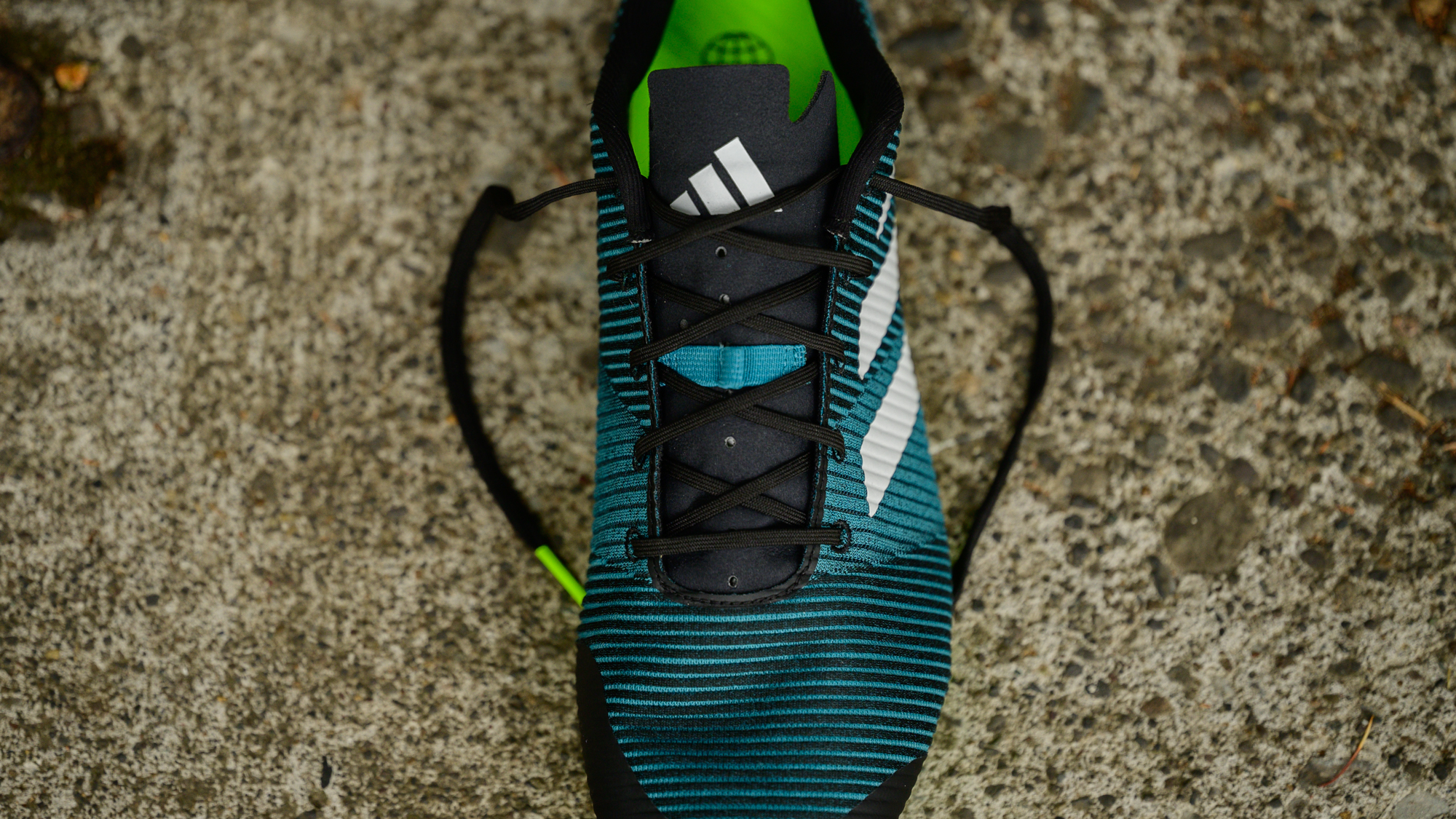
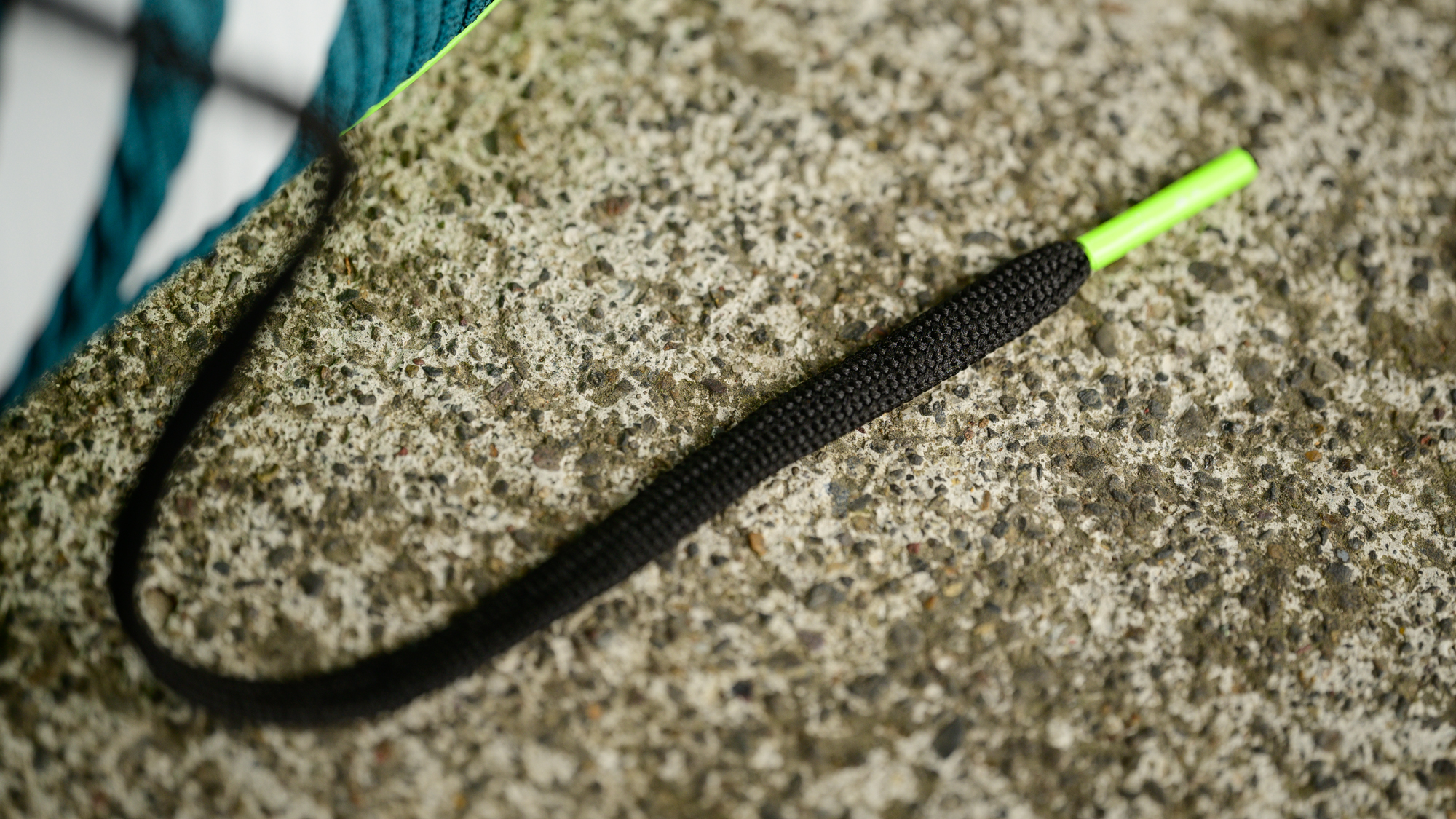

Verdict
Not every pair of cycling shoes has to be the stiffest most race ready option on the market. The latest S-Works might tout WorldTour race wins but Adidas is focusing elsewhere. If performance is goal number one, look elsewhere.
You could even say that if performance is your focus and you are on a budget, you should look elsewhere. I included the Fizik Tempo R5 Powerstrap and Bontrager Circuit in our cycling shoes buyers guide. Both of those shoes have stiffer soles and they even cost less. If you want a budget option, look there.
Those shoes are also less comfortable than The Road Cycling Shoe from Adidas. Adidas is bridging the gap between flat shoes and cycling shoes with cleats, carving out an in-between space. These are far from being an athletic shoe with a cleat mount, but they do fall short of other cycling-specific shoes.
The only real problem with that is the price, as there seems to be a bit of a style premium here. At $180 / £150, Adidas is asking more than other entry-level cycling shoes, and there is no performance benefit. Given that, especially with shoes, buyers are often willing to pay for style that might be okay. If you prioritise the aethetic over outright performance, that's fine, just know it will cost you.







